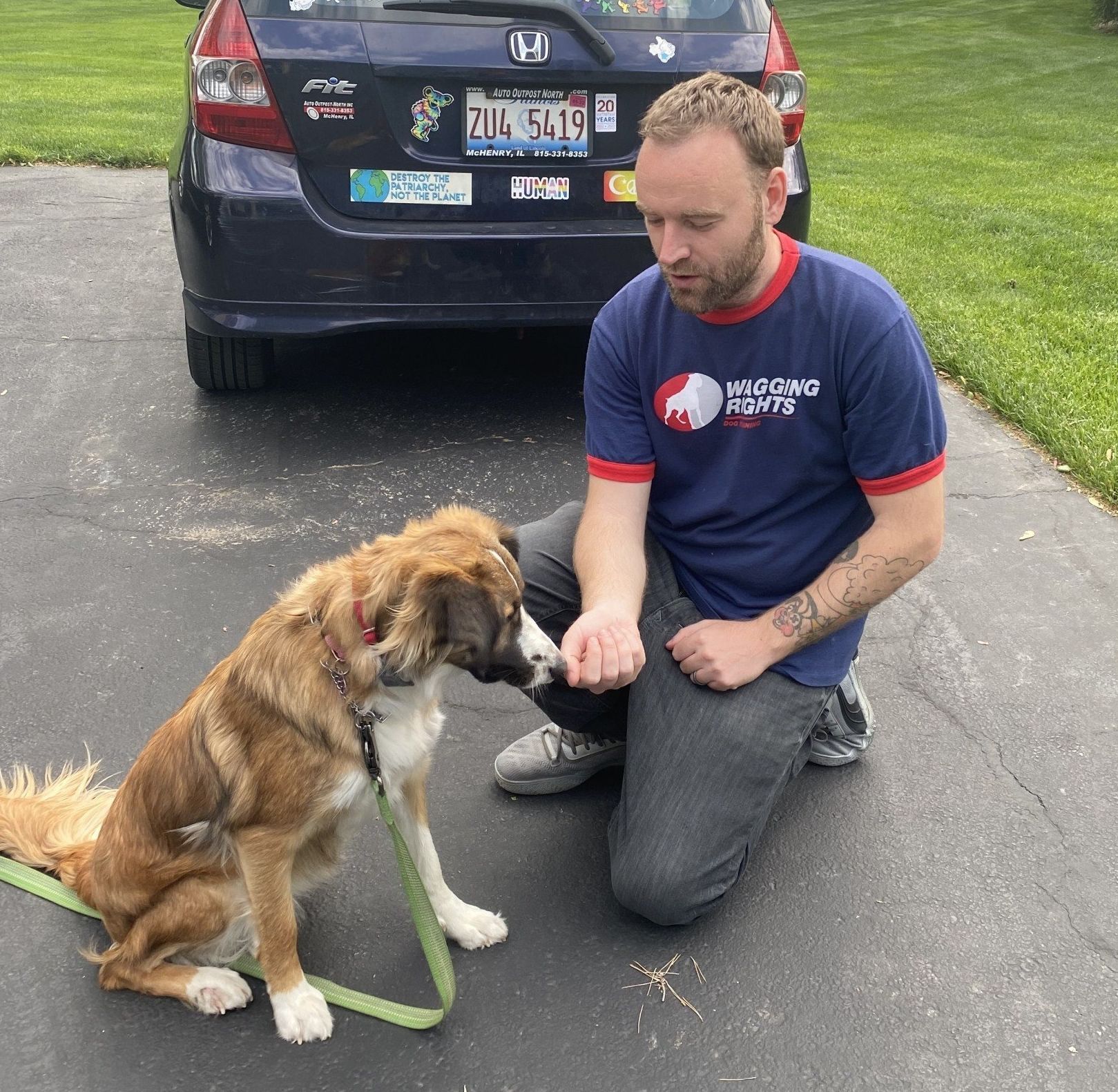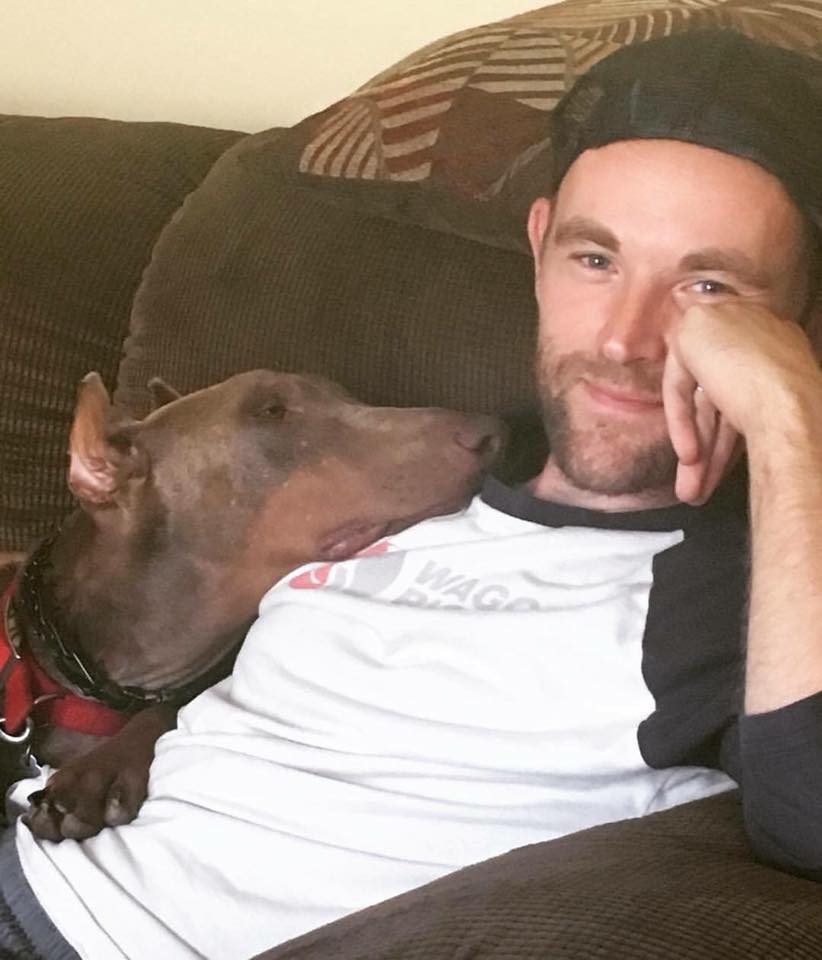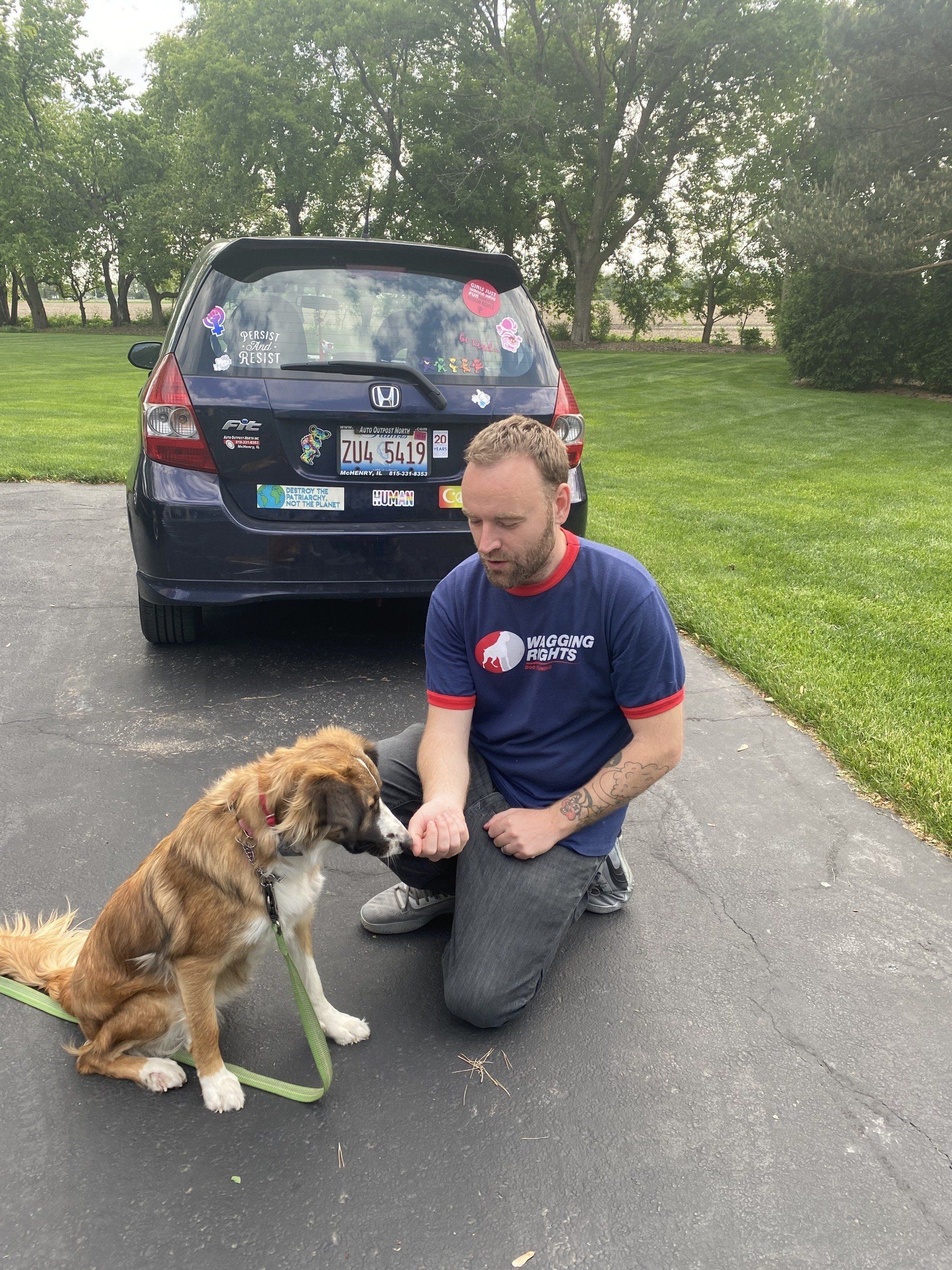BARKING, WHY DOG’S DO IT AND WHAT WE CAN DO ABOUT IT
Barking is A very common and natural behavior for dogs. Most people recognize this and will tolerate a little barking, but don’t know how to stop it when enough is enough. To solve the issue of barking we must understand why our dog is barking in the first place. Let’s take a look at the different types of barking and the solutions for each type.
The different types of barking are;
. Fear barking
. Demand barking
. Frustration barking
. Alert barking
. Excitement barking
. Stress barking
. Boredom barking
. Play barking
. Learned barking

Fear Barking
Let’s star with fear barking. Fear barking is not easily identified by a dog’s body language, sometimes the body will look like it is prepped to move away from the stimulus causing the fear, their body will be made to look smaller and ears will be back. This isn’t always the case though, some dogs can make themselves look more offensively aggressive even if fear or nervousness is at the root of the problem. Dog’s just like any other being on this earth have what’s known as defense drive, dog’s have 4 options to choose from in the defense drive, these are fight, flight, freeze and avoidance. Some dog’s even if they are afraid choose fight as a way to create space between themselves and what they are afraid of. Fear barking can be a genetic trait or a learned behavior.
The key to dealing with fear barking is to make the dog comfortable around the stimulus causing fear. I have a few different techniques that I use for treatment of fear barking and many times will use multiple techniques collectively.
The first thing I try to do is to get the dog out of it’s fear system and into it’s seeking system. This involves using the dog’s threshold to our advantage ( the threshold is the distance where the dog is not reacting) and getting the dog in to a state of curiosity. I start this process by having a person the dog is comfortable with handle the dog and randomly drop food for the dog to take. This get’s the dog thinking, thinking and reacting are in two different parts of the brain and they inhibit each other. Remember this rule, when a dog is thinking we are inhibiting reacting and when a dog is reacting we are inhibiting thinking.
Engagement training is another way to get dogs comfortable in new scenarios. Engagement training teaches the dog to pay attention to you instead of everything else in their environment. We use our reward markers “yes” and “good” and reward whenever the dog is paying attention to us. We make a lot of quick movements and encouraging sounds if we lose the dog’s attention. Again everything we do here is done below threshold and we work toward the stimulus causing the fear.
Behaviors that create space. Creating space is one of the biggest concepts when it comes to working with a fearful dog. Think about something you are afraid of, lets say spiders for example. Are you more comfortable with a spider an inch from your face or 20 ft away from you on your wall? The further the better right? The same is true for our dogs, if our dogs are afraid of something, the further they are from it the more comfortable they will be. Cue’s such as heel, come when called and place can create distance for our dogs. You can heel your dog around the stimulus causing fear, call your dog away from the stimulus causing fear and send your dog away from the stimulus causing fear. Having cue’s that keep your dog safe also builds trust in you as their handler, think of it like this, they can put their guard down because you are protecting them.
Counter conditioning and desensitization. Counter conditioning and desensitization take place in our first 2 protocols, but are worth discussing in a paragraph of their own. First establish your dogs threshold, then start rewarding for calm behaviors and slowly get closer to the trigger causing fear. Another form of counter conditioning iv’e used is called LAT (look at that) this teaches your dog to look at his trigger. You start this process sub threshold and reward your dog for looking at the trigger. The idea is to interrupt the behavior and counter condition it simultaneously.
Demand Barking
Demand barking is when a dog barks at you to get what they want, this could be attention, food, play, to be let out etc.. This behavior is definitely one of my least favorites, it is pushy, annoying and disrespectful ( they may not mean it that way, but it sure feels like it.)
The first thing I do about demand barking is change my relationship dynamics with my dog. I pick up all toy’s and bones so my dog will not bring me them trying to engage me to play. Think about it, if you dog brings you toys and you play with them, your dog is learning they can control your behavior. Then when you don’t feel like playing and they bring you toys they’re thinking “this normally works, what more do I need to do? Oh I know, I’ll bark” the worst thing you can do is reward demand barking, DON’T GIVE IN TO THEIR DEMANDS!
Extinction of a behavior means to never reward the behavior, I also choose to reward a replacement behavior. Your dog will think after a while “barking doesn’t work anymore, but this guy keeps giving me things for sitting” To use extinction effectively you will most likely have to endure an extinction burst. An extinction burst is when a behavior stops working so the dog escalates that behavior to try to make it work. So be prepared to expect louder, more frequent barks when you start this process. They will eventually catch on.
I also require my dog to work for me, this means doing obedience cue’s to get things they want. This is known as the nothing in life is free protocol. For example, sit and wait before going outside, down, sit and stand before eating, sit and watch before throwing a ball etc.. This teaches your dog patience and impulse control, it also puts you back in the drivers seat and changes your relationship with your dog.
Make sure your dog gets enough mental and physical stimulation. This has been said many times over by many trainers. The way I look at this is like visualizing a meter that is full, If your dogs energy meter is full and you are not providing them constructive outlets for there energy, that meter will overflow and the energy will come out in ways you don’t desire. You choose how that energy is spent, but it’s gotta be used somehow.
Correct the behavior. After I have addressed my relationship issues, tried extinction and made sure my dog gets adequate mental and physical exercise I would correct the dog. You can use a variety of tools to correct a dog, compressed air, bonker, e collar, prong collar. You want a correction to be enough to stop the behavior, but not unnecessarily harsh. I would stop the behavior and have them do something calm. For example, your dog is barking at you for attention, say “no” give them an effective prong collar correction, make them go to place for for a couple minutes then give them attention.
Frustration Barking
Frustration barking is similar to demand barking, but it’s not only about getting things from you. Things dogs want but can’t get cause frustration barks. For example, wanting to play with another dog, but being held back by a leash or fence, wanting a treat that rolled under the couch.
This is not as big of a deal as the first two types of barking. I’d rely on rock solid obedience for this. For example, if your dog wants to play with another dog while on leash I’d tell my dog to heel and enforce the heel, I could allow my dog to play once it has calmed down if i feel like it. If my dog is barking at something behind a fence, I’d call him back to me.
Alert Barking
Alert barking occurs when your dog is suspicious about something and is trying to determine if it is a threat. This is incredibly common in guarding breeds. Some common scenarios for alert barking are; dogs that stare out windows and bark at people and other dogs, dogs that bark when they hear noises, dogs that bark at your tv etc..
I don’t punish alert barking, I either call the dog back to me and then cue a stationary behavior (ex, place, down, sit), teach a positive interrupter or teach the dog speak and quiet. The reason I don’t punish this behavior is because for many dogs it is like a job to them and most people like this about their dog’s, they just want them to stop when they’ve had enough. Could you imagine a Doberman, Rottweiler or German shepherd that didn’t do this?
Using obedience works well in this situation, you are essentially interrupting the barking by using your recall cue (come when called) and then cueing your dog into a stationary behavior. Using interruption followed by redirection works well for many dog behaviors. For this to work most effectively you have to catch the behavior as soon as it starts, this way your dog can never build up intensity, which will make it harder to interrupt them. Many things can help you manufacture this behavior such as tapping a dog on its flank to get them to turn, using leash pressure or little leash pops.
Using a positive interrupter, a positive interrupter is a sound (usually a kissy noise) that you condition the dog to respond to. It is taught separately from the act of alert barking. Teaching a positive interrupter goes like this; first make a kissy noise and then reward the dog with a high value food reward, repeat this for several separate training sessions until the dog is enthusiastically turning towards you expecting a reward, then start using it just to interrupt behavior and rewarding the lack of barking by marking and rewarding. You can also use a positive interrupter then cue the dog to do a stationary behavior.
Teaching speak and quiet is taught separately from the actual moment your dog is alert barking. You first want to find a stimulus your dog barks at (sounds of other dogs barking, doorbell or withholding food to get a frustration bark) are the usual culprits. Once you find a stimulus your dog will bark at consistently, say “speak”, apply your stimulus, mark and reward. This way we can put speak on verbal cue. Once your dog can speak on a verbal cue, say “quiet” and once your dog stops barking, mark and reward them for being quiet. Now we have created a light switch for barking. Think of it like this in order to turn a light off it first has to be on. Now when you dog is barking in the moment You can say “quiet” if they don’t stop barking, you could now correct them for not being quiet.
Excitement Barking
Excitement barking occurs primarily during greetings or when the dog is expecting great things such as, walks, car rides, play etc.. The barks are typically high pitched and frequent.
The key to fixing excitement barking during greetings is to change how you greet your dog, change what stimuli such as knocking or doorbells mean to your dog and training calm behaviors. First of all we should not be greeting our dogs in highly excited ways ourselves, dogs will feed off your energy and all we will do is get them into a highly aroused state. Completely ignore your dog when you come home, don’t look at them, don’t talk to them, don’t touch them. Train calm behaviors such as sit, down and place. I suggest practicing this first with your dog on a leash so you can get better control of them.
To train your dog to get into a different emotional state when greeting guests, I suggest training the place behavior. Place means go to your bed and stay there until you are released. You can take the excitement out of hearing the stimulus (knocking, doorbell) by practicing first applying the stimulus and the cueing “place”. Your do will learn that the sound of the stimulus means go to place, what’s to get too excited about there?
For excitement barking when going places, cue your dog to do calm stationary behaviors before leaving and never leave when they are crazed with excitement. Calmness earns everything.
Many dog’s need to be corrected first before they can succeed at being calm. Correcting a dog is always done by saying “no” and then following with a correction, as discussed earlier you can correct a dog with many tools. Once a dog learns what “no” means you do not have to follow through with a correction if they respond correctly and stop barking when you say “no”.
Stress Barking
Stress barking occurs when the dog is panicked. Separation anxiety, being in threatening situations, wanting to be in a more comfortable/familiar setting can cause this. Barking is not the only sound being made here, a lot of whining and sometimes howling occur.
Crate training your dog and teaching them how to be alone can help with separation issues. You can also give dogs chews or treat balls when you leave to occupy their minds. This type of barking if severe enough can be corrected. Separation anxiety will be covered on it’s own in a future article and is too in depth of an issue to cover here.
If a dog is in a situation that they perceive to be threatening, I’d suggest getting them out of that situation through heeling or recall and working on it in the same ways covered under fear barking.
If a dog is trying to find a more comfortable location Ex, being at a friends house when they want to be home, I cue them to do a calm behavior and correct the barking if necessary.
Boredom Barking
Boredom barking is usually seen when dogs are left out alone in the back yard with nothing to do. It’s barking for the sake of barking.
Exercise your dog’s body and mind, give them a more fulfilling life. Call them to you if they are doing this
Play Barking
Play barking, some dogs bark while they play with people or other dogs. I don’t have any issues with this, but if it is a problem for you i’d interrupt and redirect or cease playing. Again this really isn’t an issue.
Learned Barking
Learned barking, I added this as a type of barking because if a dog learns that something can be achieved through barking, there is a learned element to this. For example dogs can learn that fear barking gets them space and continue barking in the future because they were functionally rewarded. If a dog demand barks and succeeds in getting their way, there is a learned element to that.
To cap off this article I would like to mention that for many types of barking discussed in this article an overall problem is arousal level which is caused by adrenaline. If you can interrupt that flow of adrenaline right away you can raise your chances of success when it comes to stopping many types of barking.

















